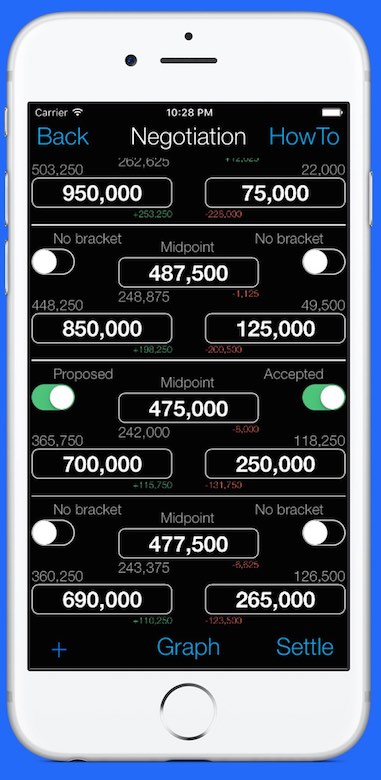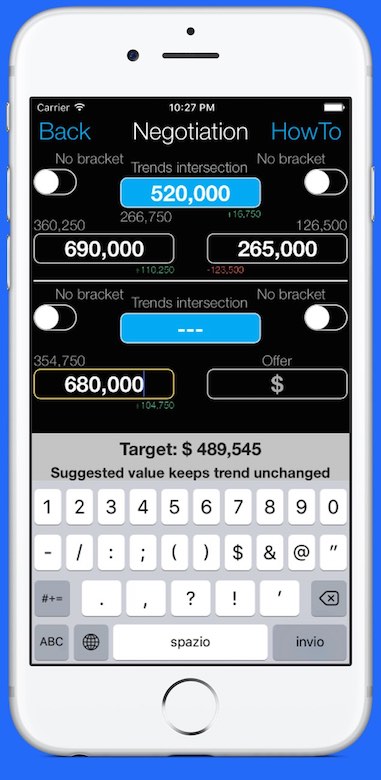
ADR Mediation Tool features
COMPUTE
The negotiation stage is the most critical phase of the ADR mediation. No matter how much time and effort was spent in preparation of the mediation preliminaries the settlement can be at risk if plaintiff and defendant are not armed with the right weapons.
With ADR Mediation tool plaintiff and defendant replace error prone pen and paper or complicated spreadsheet with automatic computation on their phone.
Plaintiff: $1 million. Plaintiff begins high. The initial demand is the result of his decision tree analysis.
Defendant: $50,000. Defendant moves slowly. Defendant moves cautiously.
Plaintiff: $950,000. Plaintiff signals his unhappiness with defendant’s response.
Defendant: $75,000. Defendant plays by ear.
Plaintiff: $850,000. Plaintiff wants to understand the defendant’s behavior.
Defendant: $125,000. Defendant keeps playing his game.
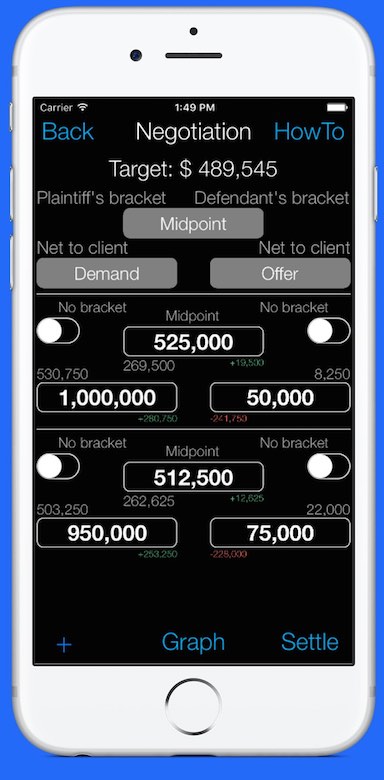
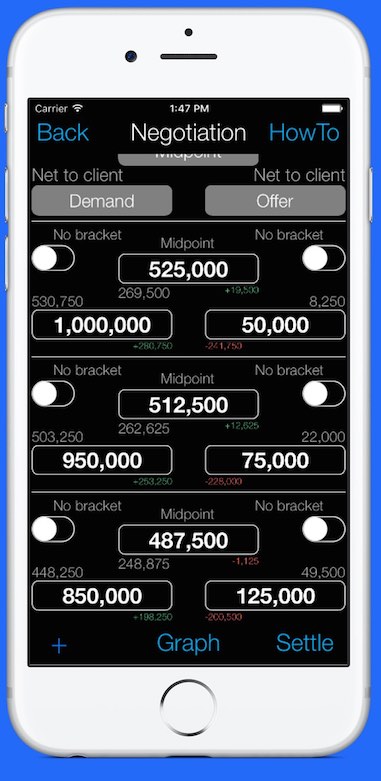
RESPONSE RATIO
What the plaintiff should ask himself before making the next move?
Is the defendant playing in defense or is he waiting for a signal from the plaintiff?
What is the offer’s middle point predicting?
Is the defendant waiting a plaintiff significant assessment when he is responding proportionally to the demands? The Response Ratio indicates that the defendant is just bouncing back any demand with a constant percentage rate.
TRENDS INTERSECTION
How can the plaintiff know when the defendant begins bidding seriously (i.e. begins a serial progression)? Trends intersection value is the answer. Trend intersection point is the meeting point of the two lines passing from the last two demand and offer points. The start of a serial progression can be indicated by the difference between the trend intersection point and the midpoint.
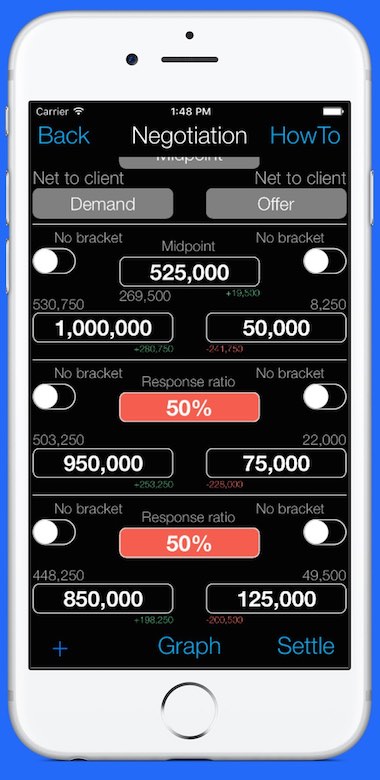
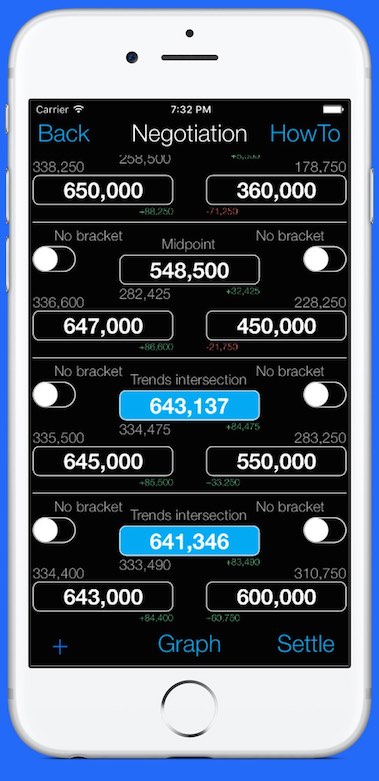
BRACKETS
The negotiation of the mediation enters a stall. The mediator suggests the two opponents to review their decision trees and make conditional offers by bracketing. The bracket indicates the end of the previous trend and the beginning of a new one.
PROJECTED MOVE
ADR MediationTool helps the opponents formulating the demand and offer by the projecting next move. The projected next move matches either the last midpoint, response ratio or the trends intersection.
